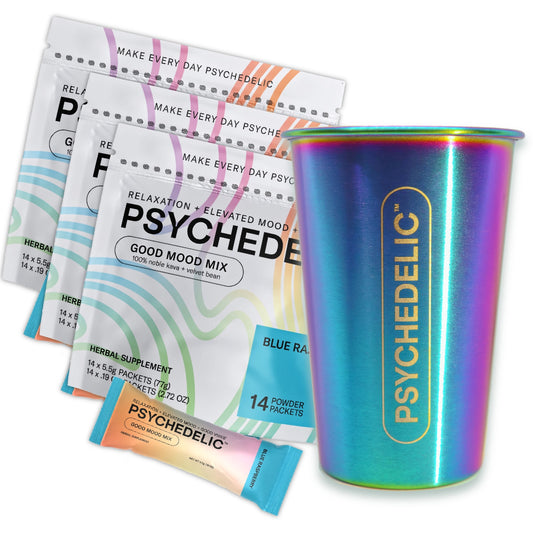All About Psychotomimetic Substances: Their Function in Psychological Research
Psychotomimetic compounds, such as LSD and psilocybin, have actually gathered increasing rate of interest in psychological research study for their ability to duplicate psychotic signs and symptoms and offer understanding into different psychological health and wellness problems. Their interactions within the mind, particularly with serotonin and dopamine paths, recommend a facility relationship in between consciousness and neurobiology that might open novel healing avenues. As scientists remain to explore their prospective applications, ethical factors to consider surrounding their use in professional settings come to be critical, elevating vital inquiries regarding security and informed approval that warrant additional exploration.
Meaning of Psychotomimetic Substances
In the realm of emotional research, psychotomimetic substances are materials that can cause impacts looking like those of psychosis, such as hallucinations, delusions, and transformed assumptions of reality - About Golden Psycho. These substances can be identified right into numerous classifications, consisting of hallucinogens, dissociatives, and specific stimulants, each producing distinct emotional results
The medicinal activity of psychotomimetic compounds typically includes modulation of neurotransmitter systems, particularly those pertaining to serotonin, dopamine, and glutamate. Substances like lysergic acid diethylamide (LSD) primarily act on serotonin receptors, leading to extensive changes in sensory assumption and cognition.
The energy of psychotomimetics in research study lies in their capacity to simulate psychotic signs, giving a design for comprehending the underlying devices of psychotic conditions such as schizophrenia. By examining the effects of these substances, scientists can gain understandings right into the neurobiological and mental processes that add to psychosis.
Moreover, psychotomimetic compounds have actually been checked out for their therapeutic possibility in treating various psychological health and wellness conditions, consisting of anxiety and anxiety, highlighting their twin function in both study and prospective clinical applications.
Historic Development and Context
The expedition of psychotomimetic substances has a rich historic context that dates back to ancient human beings, where compounds such as psilocybin mushrooms and peyote were utilized in spiritual and recovery methods. These very early uses often linked with religious rituals, suggesting an extensive reverence for the transformed states of awareness caused by these compounds.
The mid-20th century noted a significant pivotal moment in the study of psychotomimetic materials, specifically with the synthesis of LSD by Albert Hofmann in 1938. The succeeding popularization of LSD in the 1960s militarized a wave of interest in both its psychological impacts and possible restorative applications. Researchers started to check out how these materials could resemble psychotic states, offering understandings into mental disease.
Nonetheless, the boosting association of psychotomimetics with counterculture movements resulted in governing backlash, finishing in the criminalization of most of these substances. Despite these difficulties, the resurgence of passion in the restorative potential of psychedelics in the 21st century has actually prompted renewed research. This historical trajectory emphasizes the progressing perception of psychotomimetic compounds, transforming from spiritual substances to subjects of clinical questions and, potentially, restorative assurance.
Mechanisms of Action
Understanding the devices of activity of psychotomimetic compounds discloses the complex methods these substances connect with the brain's neurochemistry. These compounds mainly apply their effects via modulation of neurotransmitter systems, specifically serotonin, dopamine, and glutamate.
Along with serotonin, dopaminergic paths are dramatically affected by substances like mescaline and particular cannabinoids, which can result in altered states of awareness and changes in state of mind and motivation. The NMDA receptor enmity observed with compounds like ketamine highlights an additional pathway via which psychotomimetics may generate dissociative states and profound changes in believed procedures.
The neurochemical cascades launched by these interactions cause complicated and multifaceted psychological impacts. Recognizing these systems is essential for both the advancement of mental study and the therapeutic possibility of psychotomimetic compounds, as they offer understandings into the underlying neural correlates of transformed states of consciousness.
Current Research and Applications
Current examinations right into psychotomimetic compounds have actually revealed a revival of rate of interest over here in their healing applications, especially in the fields of psychiatry and psychology. Scientists have actually started checking out materials such as psilocybin, LSD, and ayahuasca for their potential to minimize signs and symptoms connected with numerous mental health and wellness problems, consisting of depression, stress and anxiety, and PTSD.
Scientific trials have actually shown that, when administered in controlled atmospheres, these substances can promote extensive psychological experiences, advertising psychological advancements and improved restorative outcomes. As an example, researches have actually revealed that psilocybin-assisted treatment can lead to considerable decreases in treatment-resistant clinical depression, with effects lasting for a number of months post-treatment.
Moreover, psychotomimetic substances are being reviewed for their capacity to promote neuroplasticity, potentially permitting more reliable rewiring of maladaptive idea patterns. These findings suggest that such substances might function as complements to typical psychotherapeutic approaches, enhancing the effectiveness of therapeutic treatments.
As study proceeds, the focus is changing towards recognizing the ideal dosages, therapeutic setups, and participant features that can take full advantage of the benefits of these compounds. This expanding field holds assurance for reinventing blog here psychological health and wellness treatment paradigms and resolving the restrictions of standard psychiatric medicines.
Moral Considerations in Research

Browsing the honest landscape of research including psychotomimetic compounds is crucial to making this link certain participant safety and the honesty of research study outcomes. Scientists need to focus on educated authorization, making certain that participants totally recognize the potential risks and advantages associated with the materials being studied. This consists of offering thorough info regarding possible emotional impacts, including severe and lasting influences, and allowing participants the possibility to take out from the study at any type of time scot-free.
Furthermore, honest oversight by institutional testimonial boards (IRBs) is essential. IRBs examine study protocols to protect individual well-being and maintain honest requirements. This analysis aids minimize threats and ensures that studies are carried out with scientific rigor. Furthermore, the capacity for browbeating need to be very carefully analyzed, especially when vulnerable populations are involved.
Privacy is one more critical consideration. Scientists need to carry out robust measures to shield individuals' identifications and data, particularly offered the delicate nature of experiences related to psychotomimetic compounds (About Golden Psycho). Inevitably, a dedication to ethical practices not just cultivates depend on between scientists and individuals but additionally improves the integrity and credibility of the research end results, adding to the development of mental expertise

Conclusion
In final thought, psychotomimetic substances, particularly traditional psychedelics such as LSD and psilocybin, deal considerable understandings into psychological problems through their unique mechanisms of activity. Their therapeutic possibility in attending to conditions like anxiousness and PTSD highlights the importance of ongoing research in this area. However, making certain honest criteria in research study techniques is vital for participant safety and security and notified consent, enabling for a responsible expedition of these compounds' advantages and effects within mental science.